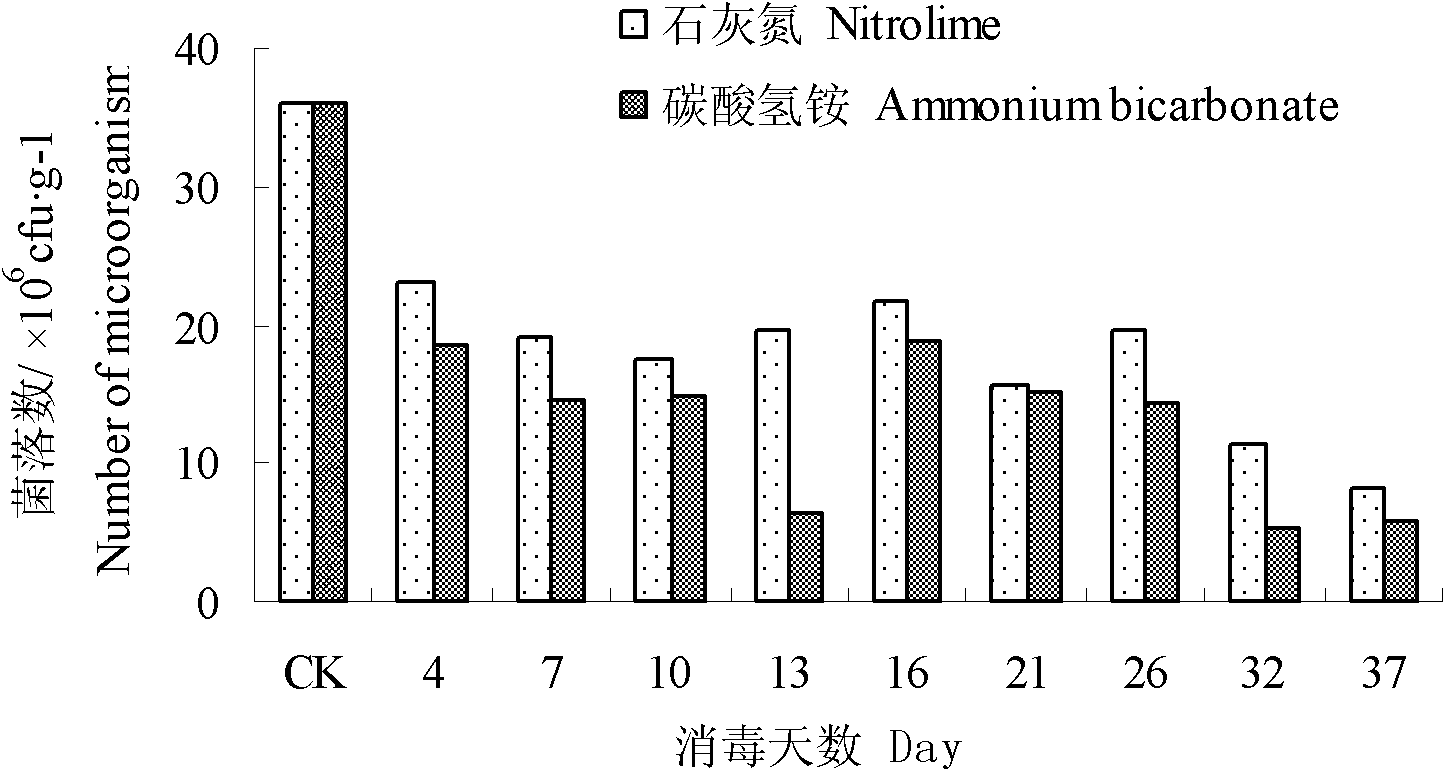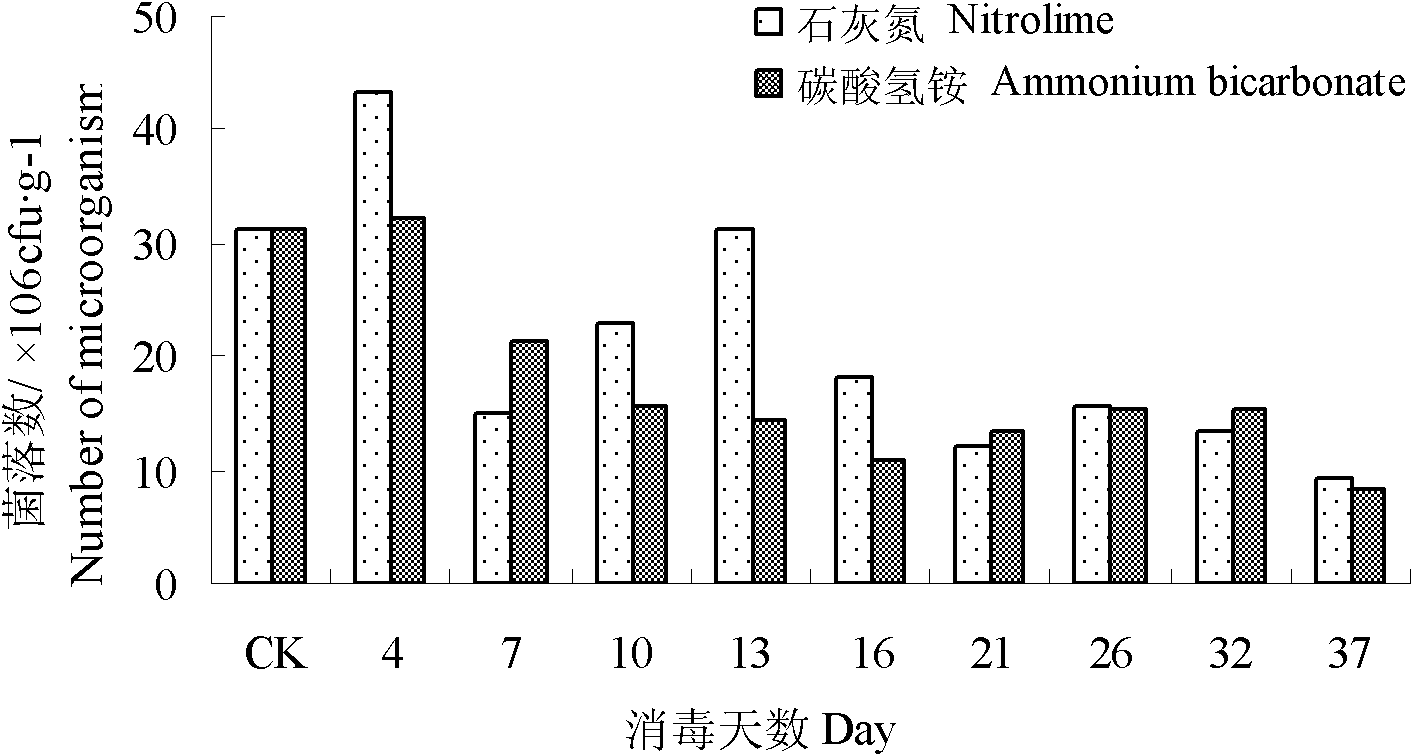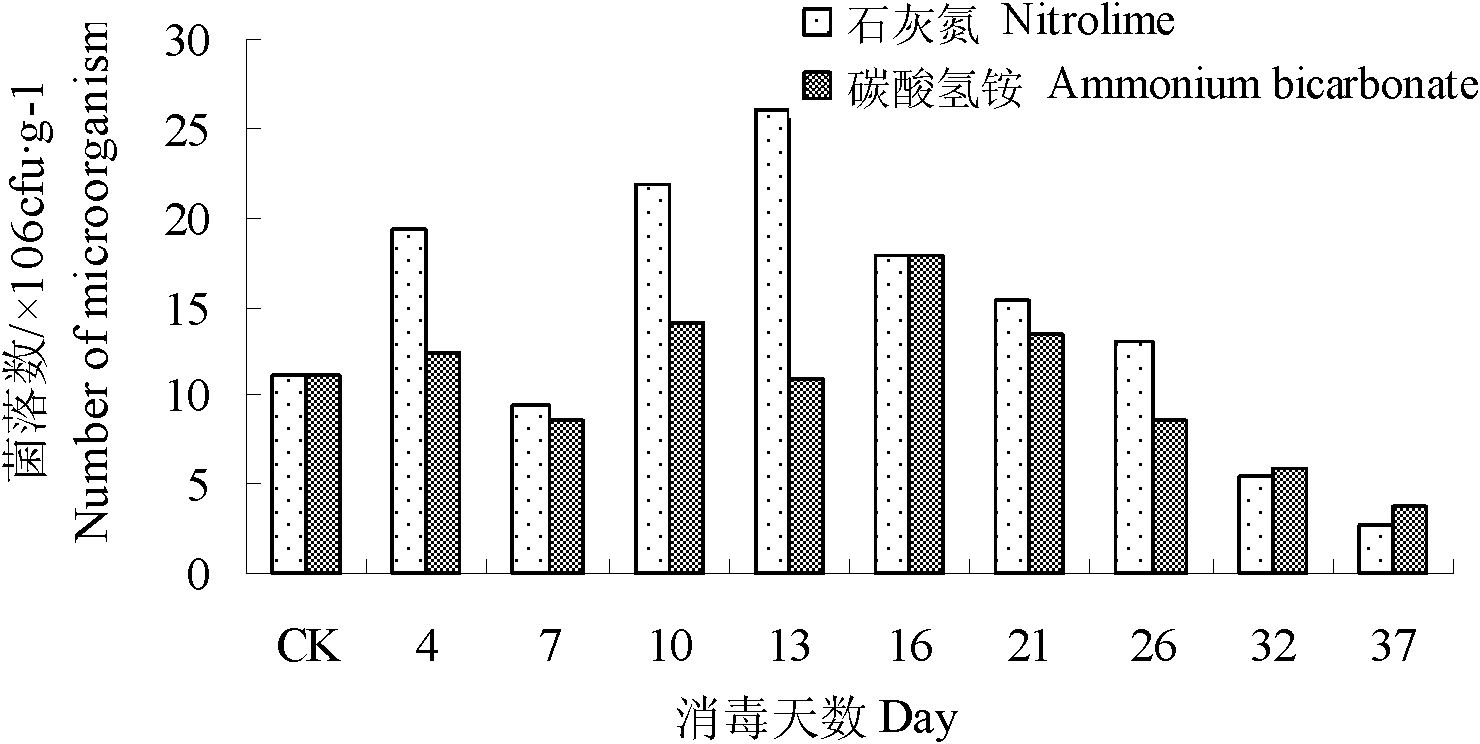Greenhouse vegetable soil sunlight disinfection method
A disinfection method and soil technology, applied in botany equipment and methods, disinfectants, animal repellents, etc., can solve the problems of limited sources, inconvenient large-scale application, and high price of lime nitrogen, and achieve wide sources and easy Promotion, simple operation effect
- Summary
- Abstract
- Description
- Claims
- Application Information
AI Technical Summary
Benefits of technology
Problems solved by technology
Method used
Image
Examples
Embodiment 1
[0025] Sunlight disinfection method for facility vegetable soil, the facility vegetable is continuous cropping greenhouse cucumber, and the specific disinfection method is:
[0026] In the season of the strongest sunlight in July to August in summer, after cleaning up the residues of the previous crops, the 0.15kg / m 2 Sprinkle the ammonium bicarbonate evenly on the soil surface, then immediately plow the soil 30cm deep, level it after deep plowing, and cover the soil surface with a transparent PE plastic film with a thickness of 0.03mm; Water down, pour the soil thoroughly without storing water, close the film after watering, seal the greenhouse, and carry out sunlight disinfection for 30 days.
[0027] Use a soil temperature recorder to measure the ground temperature during the disinfection period, and measure the temperature of 5 different soil depths below the soil surface: 0cm (surface), 5cm, 10cm, 15cm, and 20cm.
[0028] The disinfection soil samples were collected 3 da...
Embodiment 2
[0032] Sunlight disinfection method for facility vegetable soil, the specific disinfection method is:
[0033] During the period of high sunlight intensity from July to August in summer, after cleaning up the residues of the previous crops, according to 0.05kg / m 2 Sprinkle the ammonium bicarbonate evenly on the soil surface, then immediately plow the soil 35cm deep, level it after deep plowing, and cover the soil surface with a transparent PE plastic film with a thickness of 0.03mm; Water down, pour the soil thoroughly without accumulating water, close the film after watering, seal the greenhouse, and carry out sunlight disinfection for 25 days.
[0034] After the sunlight disinfection is completed, open all the vents of the greenhouse for ventilation, but the insect-proof nets at the vents should be complete. After 3 to 5 days of ventilation, prepare the ground for sowing or planting the next crop.
Embodiment 3
[0036] Sunlight disinfection method for facility vegetable soil, the specific disinfection method is:
[0037] During the period of high sunlight intensity from July to August in summer, after cleaning up the residues of the previous crops, according to 0.10kg / m 2 Sprinkle the ammonium bicarbonate evenly on the soil surface, then immediately plow the soil 36cm deep, level it after deep plowing, and cover the soil surface with a transparent PE plastic film with a thickness of 0.03mm; Water down, pour the soil thoroughly without storing water, close the film after watering, seal the greenhouse, and carry out sunlight disinfection for 28 days.
[0038] After the sunlight disinfection is completed, open all the vents of the greenhouse for ventilation, but the insect-proof nets at the vents should be complete. After 3 to 5 days of ventilation, prepare the ground for sowing or planting the next crop.
[0039] Comparison of the disinfection effect of the soil sunlight disinfection m...
PUM
| Property | Measurement | Unit |
|---|---|---|
| Thickness | aaaaa | aaaaa |
Abstract
Description
Claims
Application Information
 Login to View More
Login to View More - R&D
- Intellectual Property
- Life Sciences
- Materials
- Tech Scout
- Unparalleled Data Quality
- Higher Quality Content
- 60% Fewer Hallucinations
Browse by: Latest US Patents, China's latest patents, Technical Efficacy Thesaurus, Application Domain, Technology Topic, Popular Technical Reports.
© 2025 PatSnap. All rights reserved.Legal|Privacy policy|Modern Slavery Act Transparency Statement|Sitemap|About US| Contact US: help@patsnap.com



